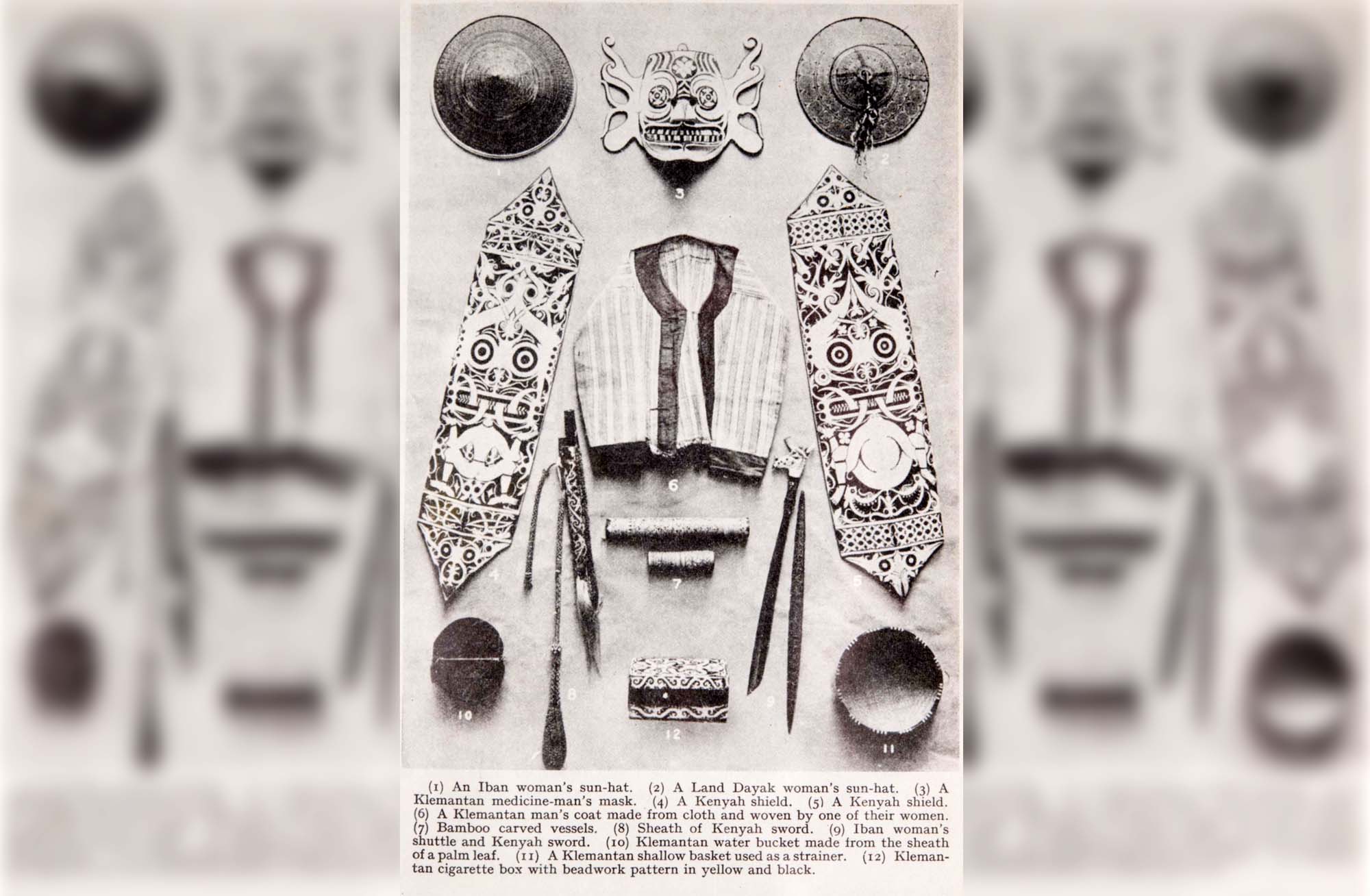Geometric Patterns
Sarawak is the northwest area of the island of Borneo. It was founded as an independent state in 1841, but in 1888 became a British Protectorate. It became self-governing and part of Malaysia in 1963.
Charles Hose was Sarawak’s colonial administrator from 1884 to 1905. He gathered a large collection of “ethnography” and natural history items. Much of this is now in museums, including the British Museum, the University of Cambridge’s Museum of Archaeology and Anthropology, and National Museums Liverpool.

In this photograph a “strainer shallow basket”, labelled number 11, to the bottom right, is now in the Leicester Museums Collection.
Hose and Peach probably met for the first time at the 1924 Wembley Empire Exhibition, in London, where Hose helped to create the Sarawak Pavilion, and Peach purchased a large piece of traditional patterned Sarawak cloth. They subsequently started to exchange letters. In 1925, Hose loaned some objects from Sarawak for an exhibition at the Dryad Handicrafts Showroom.
Peach’s obsession with geometric patterns can be seen throughout the Dryad basketry collection. It’s no surprise therefore that Peach wrote to Hose on 20th January 1926, requesting “a collection of baskets showing the patterns possible”, among other items.
